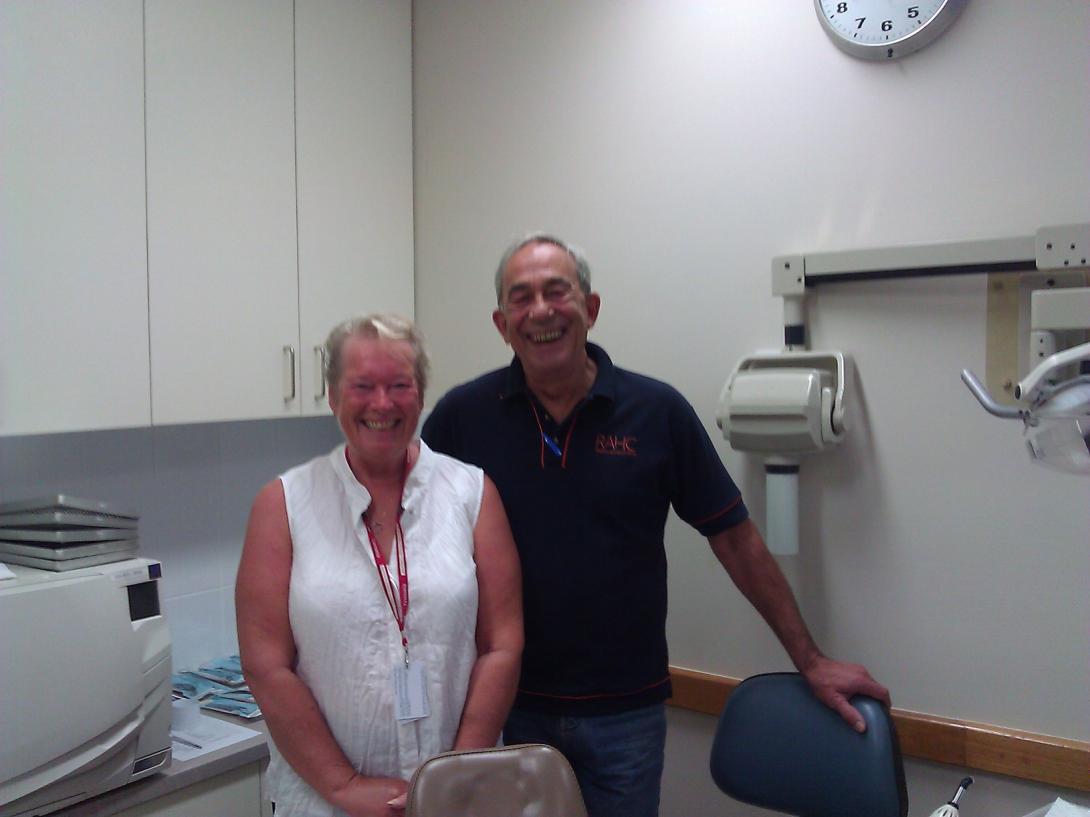
Two years after graduating from the University of Sydney and having spent time abroad in the UK, I returned to Australia and opened my own practice in the eastern suburbs of Sydney. After eight years, the wanderlust returned to London where I spent the next 20 years. During this time I spent 12 years running the Dental Department for the British Broadcasting Corporation (BBC) in London.
Upon returning back to Australia, I worked as an associate for a short period but didn’t find the work rewarding. I was working as a locum when I attended the Australian Dental Association (ADA) Congress in Melbourne and it was here that I happened to hear about the Remote Area Health Corps (RAHC). After chatting to the team on the stand, I was instantly interested in the work that was on offer.
After navigating through the credentialling process, I was offered my first placement to Galiwinku, Maningrida and Milingimbi – all communities at the top end of the Northern Territory. The prospect of the unknown and being challenged at this stage of my career was very exciting, if slightly daunting.
On arrival into Darwin, I had a day’s orientation with the Department of Health to learn about the software programs used and the clinical expectations of the oral health teams whilst out in the remote Indigenous communities. The following day I attended the RAHC Cultural Orientation led by two Indigenous women. The orientation program provided enormous amounts of new information for me to consider and admittedly, I went to bed that night embarrassed at the depth of my ignorance of the Indigenous culture.
Oral health placements tend to work in teams and for this placement I was accompanied by Kylie, a remarkable dental assistant, who knew the software programs and had clinical experience belying her youth. The need for our services in oral health was soon evident to me as the amount of dental disease that was widespread amongst the Indigenous communities was apparent. It was truly an eye opener and although expected, it was still staggering.
By the end of my first placement, I was left with a feeling of clinical confusion. I was used to ‘fixing’ patient’s oral conditions back in the urban-based settings whereas in the remote communities, we were mostly treating symptoms. However difficult it was for me to personally come to terms with my task, I have never felt as appreciated by patients as I was during my time in these remote Indigenous communities.
Another factor I experienced on my first trip to the remote areas was the relative isolation – something that I thoroughly enjoyed. It gave me time to reflect and try to understand my role in helping these Indigenous communities. There is so much an individual can do and I realised that the key to making inroads into the health of our Indigenous population must be as a team.
The staff members at the remote health clinics across the Northern Territory are remarkable. I have now completed over 20 placements and I feel that I have forged lifelong friendships with some of these staff members and hold a deep admiration for every single one of them. From a personal viewpoint, it is also very comforting to work with communities who have so much respect for their elders and history.
I have now been on short-term placements with RAHC for over three years and I believe that all the experience I have gathered throughout my career is paying off in the best way possible. In the past, I have always worked in the private sector where there was always a business element to everything I did. I now work only with the patients’ best interests at heart – I find this liberating and very professionally satisfying.
If anyone reading my story is considering a placement with RAHC in the hope of improving the health of the Indigenous population, I can say ‘do it’ because it is the best thing that I have ever done in my career.
